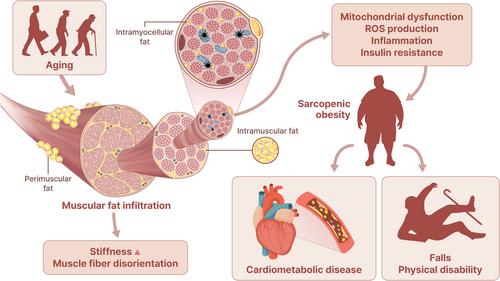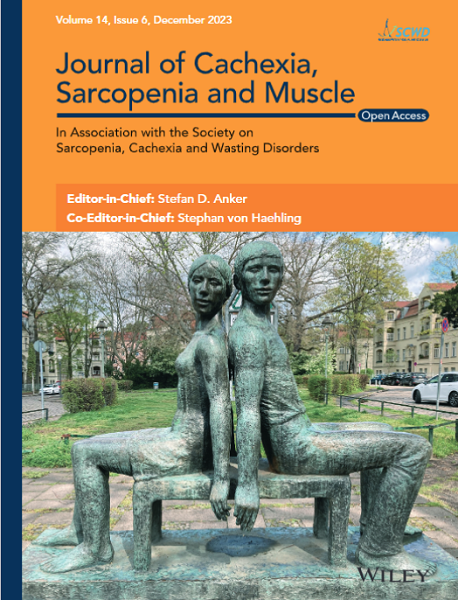Impact of Adipose Tissue and Lipids on Skeletal Muscle in Sarcopenia
Abstract
Background
Although the decline in muscle mass, function and increased visceral obesity are attracting substantial attention in the ageing society, approved treatment modalities for sarcopenia/sarcopenic obesity (SO) remain limited. Elucidating effects and mechanisms of adipose tissue and lipids on skeletal muscle is important for identifying potential prevention and treatment targets for sarcopenia/SO.
Methods
In this narrative review, we aim to comprehensively summarize current knowledge on how adipose tissue and lipid metabolites influence skeletal muscle with detailed mechanistic explanations, especially in sarcopenia development. We also tried to explore future perspectives for optimal strategies for managing sarcopenia.
Results
Fatty infiltration in skeletal muscle can alter the structure, metabolism and signalling pathways of muscle, thereby worsening muscle function and physical performance. Intracellular lipid droplets could disrupt normal physiology within muscle cells, but it might be influenced not only by quantity but also by size, location and characteristics of lipid droplets. Intracellular lipid metabolites may induce lipotoxicity in cell signalling of muscle cells, but effects might differ by types or chemical structure. Highly trained athletes exhibit insulin sensitivity despite high levels of muscular fat, a phenomenon called the athlete's paradox. Lipid droplets within the skeletal muscle of athletes are small and are mainly located in the intermyofibrillar area, which is rich in fast-twitch, Type I fibres. In contrast, patients with Type 2 diabetes/obesity accumulate larger lipid droplets in the subsarcolemmal area, which is richer in Type II fibres. Ageing is intricately associated with mitochondrial dysfunction and the concomitant decline in mitochondrial biogenesis, all of which may lead to sarcopenia. SIRT1 and AMPK, two key energy sensors, are involved in mitochondrial biogenesis through regulation of PGC-1α. Modulation of PGC-1α levels in skeletal muscle may help protect against sarcopenia by preserving muscle integrity, enhancing muscle function, improving insulin sensitivity and reducing inflammation and oxidative stress. Excessive nutrient intake and obesity triggers mitochondrial dysfunction by inducing activation of the inflammatory response and increased production of reactive oxygen species. Skeletal muscle and adipose tissue are closely connected through mediators called adipokines and myokines, and it is important to understand the mechanisms of their interaction.
Conclusions
Dysregulation of lipid metabolism and intramuscular fat accumulation leads to inflammation, oxidative stress, insulin resistance and mitochondrial dysfunction, resulting in reduced muscle mass and strength. Further research on associations between fat/lipids and muscle would be helpful to investigate optimal management strategies for sarcopenia/SO in the rapidly ageing world.


 求助内容:
求助内容: 应助结果提醒方式:
应助结果提醒方式:


